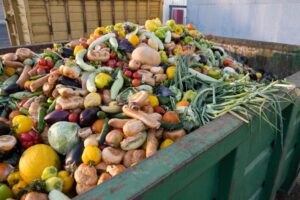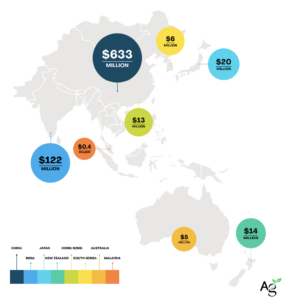Restaurants can earn $7 for every $1 they invest in fighting food waste, according to a new report from the World Research Institute (WRI) and Waste and Resources Action Programme (WRAP).
The US restaurant industry alone is responsible for more than 11 million tons of food waste each year, or $25 billion worth of food, according to non-profit ReFED.
Entitled The Business Case for Reducing Food Loss and Waste, the research was done on behalf of Champions 12.3, a coalition of 40 leaders in the private and public sector dedicated to achieving the United Nation’s Sustainable Development Goals. And it was released today in conjunction with Valentine’s Day as one of the busiest restaurant nights of the year.
Target, Measure, Act
The report’s primary message for restaurants interested in slashing waste is to keep efforts simple by adopting a “target, measure, act” approach, which involves five key steps:
- Measure the amount of food being wasted to know where to prioritize efforts,
- Engage staff,
- Re-think inventory and purchasing practices,
- Reduce overproduction, and
- Re-purpose excess food.
During a one-year period, WRI studied 114 restaurants across 12 countries as they worked to reduce food waste in their kitchens. Participating restaurants reduced food waste by 26% on average, and more than 75% of the restaurants had recouped the investment they made to slash food waste in the first year alone. The study included upscale sit-down restaurants as well as fast food chains like Pizza Hut.
Applicable to All Restaurants
The participating restaurants reported vastly different annual earnings, from mom-and-pop cafes earning $400,000 to multi-million dollar restaurants capturing $17.3 million in sales. Having a range of earnings helped ensure that the food waste solutions wouldn’t pertain to one particular restaurant demographics over another. The “target, measure, act” approach worked equally well for the wide range of restaurants, according to the report, providing a flexible framework that could be adapted to each outfit’s particularities.
Participating restaurants invested no more than $20,000 in trying some new tricks, including measuring and monitoring the amount of food tossed at the end of the day, teaching staff members about appropriate food handling and storage procedures, and switching up menus to create fewer scraps.
Although restaurants are not the biggest generators of food waste, they can play an influential role in changing how consumers — the biggest wasters — think about the issue in their daily lives and in their own kitchens, according to Liz Goodwin, senior fellow and director of Food Loss and Waste at WRI.
“They can communicate back to the consumers that it’s normal to only put on your plate what you need to have as a meal, and by them knowing that the restaurant is trying to reduce food waste, it means that when they go home they will know that’s normal behavior,” she explained on a press call.
Restaurants with well-established food waste efforts also garnered higher consumer approval, according to the research.
A Little Effort Goes a Long Way
One of the biggest takeaways from the study was that a little effort goes a long way for mitigating food waste. Simply purchasing less food cuts down on initial costs and developing new menu items from leftovers that were previously considered kitchen scraps creates new revenue for food retailers. And although there are many technology-based solutions for tracking and reducing food waste, the panel agreed that even basic approaches like taking notes with pen and paper are just as effective.
“Often the sources of the solutions are the co-workers in the kitchen,” said Richard Swannell, director of WRAP Global on the call. “Once they have data, they are great at coming up with creative methods that work for that particular restaurant.”
The report makes it clear that the cost of interventions tends to be low and many of the changes involve the processes within an individual kitchen, changing menus, and changing the ordering process. “Simple things. Technology can help, but it’s not essential,” added Swannell.
IKEA, which serves 680 million people in its restaurants each year, has identified three key ways to address food waste at its restaurants, according to Michael La Cour, managing director of IKEA Food Services who was also on the call: Identify short-term actionable goals to tackle before moving on to a new goal; make friends in the tech industry with chefs, entrepreneurs and other parties who can drive innovation; and engage with coworkers, suppliers, and other partners because engagement and teamwork is key to tackling waste.
Using these three principles and the “target, measure, act” approach, IKEA has saved 3 million meals worth of food, or 1.4 million kilos of food waste, since 2016 by the company’s estimate.
The report is follow up from The Business Case for Reducing Food Loss and Waste (published March 2017) and is the third in a series of papers examining the business case for specific industry sectors. Analyses of the hotel and catering industries were released in 2018.















Sponsored
International Fresh Produce Association launches year 3 of its produce accelerator